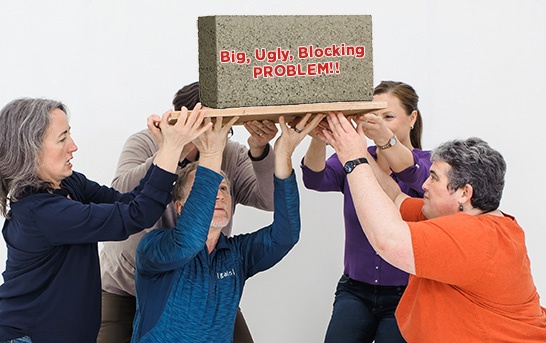How to Prevent the Opinion Wars That Derail Decision Making
One of the most important reasons for holding a meeting is to make decisions.
Yet too often, the decision-making process degenerates into a battle between competing points of view. Participants become polarized, entrenched in their positions and paralyzed by their disagreements. Unable to resolve the conflict, the group often makes a decision that everyone says they can live with, but that no one really supports. Or worse, no decision gets made at all, and the group misses the opportunity to take positive collective action.
If the leader opens a decision-making session declaring that “all ideas are welcome” and then counters the proposed solutions with previously unannounced constraints or criteria, participants may justifiably feel angry that this information was not shared at the beginning of the discussion.
This dismal scenario can be avoided by adding one step to the decision-making process: define criteria for evaluating proposed solutions.
High-Quality Criteria
The dictionary definition of criterion is “a principle or standard by which something may be judged or decided.” (Criteria is the plural form.)
In order to be useful in a group decision-making process, the criteria need to be external, objective references that can lift the discussion out of the realm of personal preferences and entrenched positions.
Let’s look at an example of a pending decision about where to hold the annual directors meeting. Criteria might include:
- Cost of transportation to the venue not to exceed $$$ (specified amount)
- Venue must be accessible for people in wheelchairs
- The organization has an existing project or a local partner in the location.
Focusing on these specifications lifts the discussion out of the realm of random, personal preferences (“Let’s go to Miami”) and into a thoughtful consideration of options. Notice the key word “options.”
To make a good decision, the group needs to generate a variety of possible solutions and not be railroaded into voting on a single proposal.
Then, before making the final decision, a simple matrix can be used to measure the proposals against the criteria.
A simple table like this makes it easy to compare options against each criterion.
|
|
Criterion 1 |
Criterion 2 |
Criterion 3 |
Criterion 4 |
|
Option 1 |
|
|
|
|
|
Option 2 |
|
|
|
|
|
Option 3 |
|
|
|
|
The discussion held when the team looks at options side-by-side like this helps eliminate options that do not meet the criteria and often sparks new ideas. For example, team members may spot an opportunity that combines elements of various proposals. In any case, the discussion is focused on co-creating possible solutions and not on taking sides based on personal preferences.
When to Establish Criteria
Usually the criteria are set early in the decision-making process and then applied when evaluating the options before making the final decision. Sometimes, in the course of researching options, new criteria emerge, and/or existing criteria are modified based on new information.
Here is a model for an effective decision-making process that includes the development and use of criteria.
This model is divided into 3 phases:
- Define the problem and scope of the decision to be taken
- Research and evaluate options (applying the decision criteria)
- Decide
Steps 2, 3, 4 and 5 can occur in any order. Often it is necessary to repeat some of these steps in order to make a solid decision.
Depending on the complexity of the issue, this process can be compressed into a single meeting or carried out in a series of meetings. Clarifying where the group is in the process helps the participants stay focused on the relevant issues.
In this process, the group makes many decisions before reaching the final step.
- What is the scope of the decision to be made?
- What criteria does the final decision need to meet?
- What information do we need in order to generate options?
- Do the proposed solutions meet the criteria?
Having a clearly defined, participatory process invites the co-creation of solutions, avoids battles based solely on personal preferences, ensures that the final decision fulfills basic requirements, and makes it easier to justify the final decision to other stakeholders.
How to Establish Criteria
For some decisions, you may be able to establish criteria with a quick email exchange. For other kinds of decisions, your organization may already have a standard set of criteria you can reference.
When the decision has the potential to significantly impact the group and it isn’t a decision the group has successfully made many times in the past, you should hold a dedicated meeting to establish the criteria.
When the group can all hear each other’s ideas about the decision scope and the criteria each person finds important in real time, they gain awareness of any competing priorities and preferences, and a better understanding of what it will take to find high-quality options.
I’ve created a meeting template and detailed guide you can use to prepare for and run this meeting. You can download it for free here.
Making a big decision with your group can be a rewarding experience that leaves you all feeling good about your choices when you avoid the battles of will that can otherwise undermine your confidence. Use this process to improve your team’s decision making, and let me know how it goes! I’ll be watching for your comments.
Want More? Learn More About the Business Side of Facilitation
Are you a professional meeting facilitator or are you thinking of becoming one? If you are, check out Beatrice Brigg’s Meeting School course.



